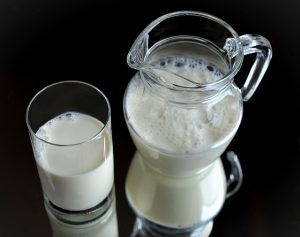Skim milk and Parkinson’s – The study you need to be aware of
Approximately 120,000 people were followed for about 25 years and those that drank low fat and skim milk had a 39% increased risk of developing Parkinson’s disease. Reassuringly, Parkinson’s disease is a relatively rare condition.

The Research
Neurology. 2017 Jul 4;89(1):46-52. doi: 10.1212/WNL.0000000000004057. Epub 2017 Jun 8.
Intake of dairy foods and risk of Parkinson disease.
Hughes KC1, Gao X2, Kim IY2, Wang M2, Weisskopf MG2, Schwarzschild MA2, Ascherio A2.
Abstract
OBJECTIVE:
To prospectively examine the association between commonly consumed dairy products and the risk of Parkinson disease (PD) in women and men.
METHODS:
Analyses were based on data from 2 large prospective cohort studies, the Nurses’ Health Study (n = 80,736) and the Health Professionals Follow-up Study (n = 48,610), with a total of 26 and 24 years of follow-up, respectively. Both US-based studies were conducted via mailed biennial questionnaires. Dietary intake was assessed with food frequency questionnaires administered repeatedly over the follow-up period. Incident cases of PD (n = 1,036) were identified via questionnaires and subsequently confirmed by reviewing medical records. We also conducted a meta-analysis to combine our study with 3 previously published prospective studies on total milk intake and PD risk and 1 study on total dairy intake and PD risk.
RESULTS:
While total dairy intake was not significantly associated with PD risk in our cohorts, intake of low-fat dairy foods was associated with PD risk. The pooled, multivariable-adjusted hazard ratio (HR) comparing people who consumed at least 3 servings of low-fat dairy per day to those who consumed none was 1.34 (95% confidence interval [CI] 1.01-1.79, p trend = 0.04). This association appeared to be driven by an increased risk of PD associated with skim and low-fat milk (HR 1.39, 95% CI 1.12-1.73, p trend <0.01). Results were similar in women and men (p for heterogeneity >0.05). In the meta-analysis, the pooled relative risk comparing extreme categories of total milk intake was 1.56 (95% CI 1.30-1.88), and the association between total dairy and PD became significant (HR 1.27, 95% CI 1.04-1.55).
CONCLUSIONS:
Frequent consumption of dairy products appears to be associated with a modest increased risk of PD in women and men.
© 2017 American Academy of Neurology.











